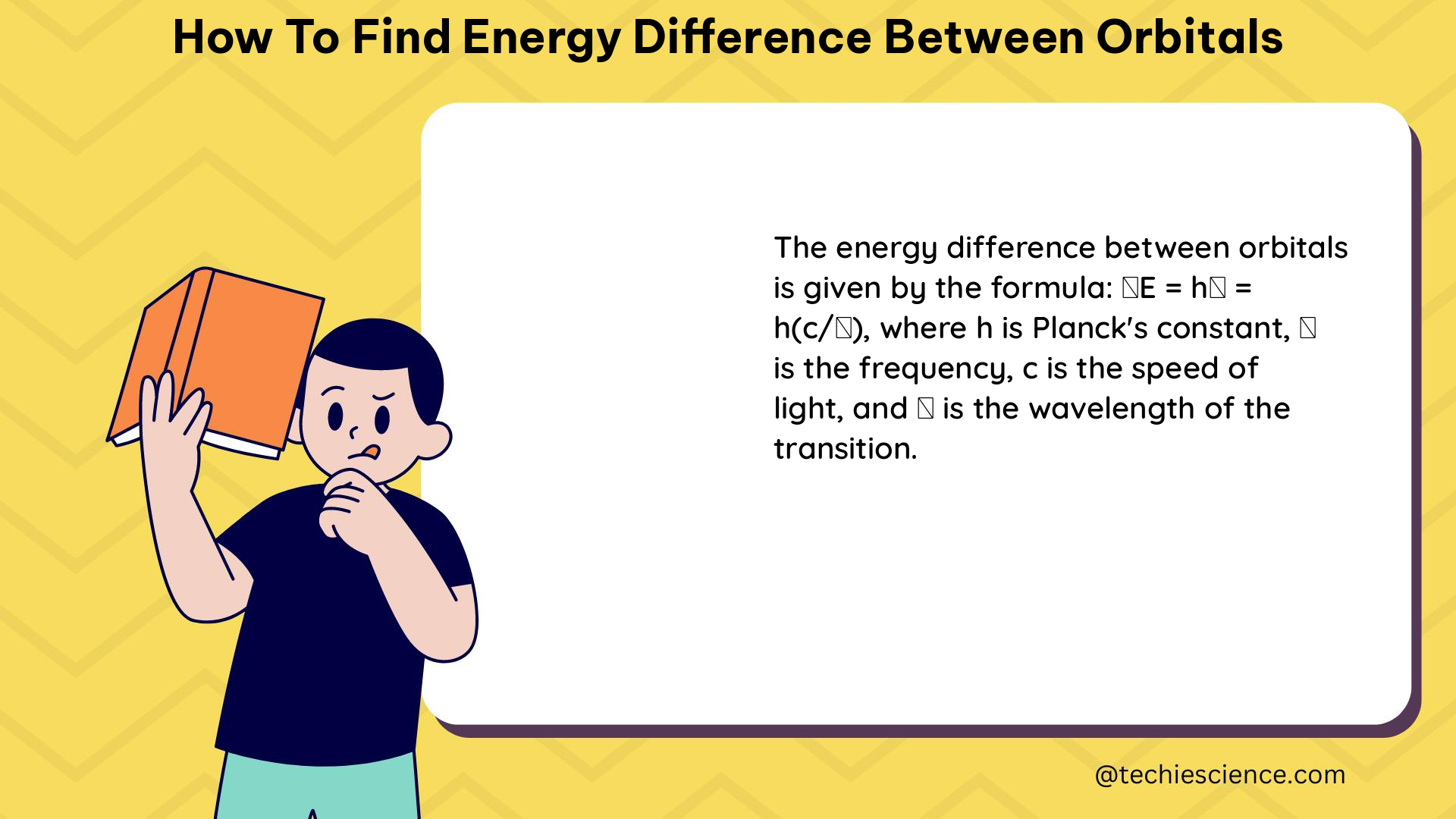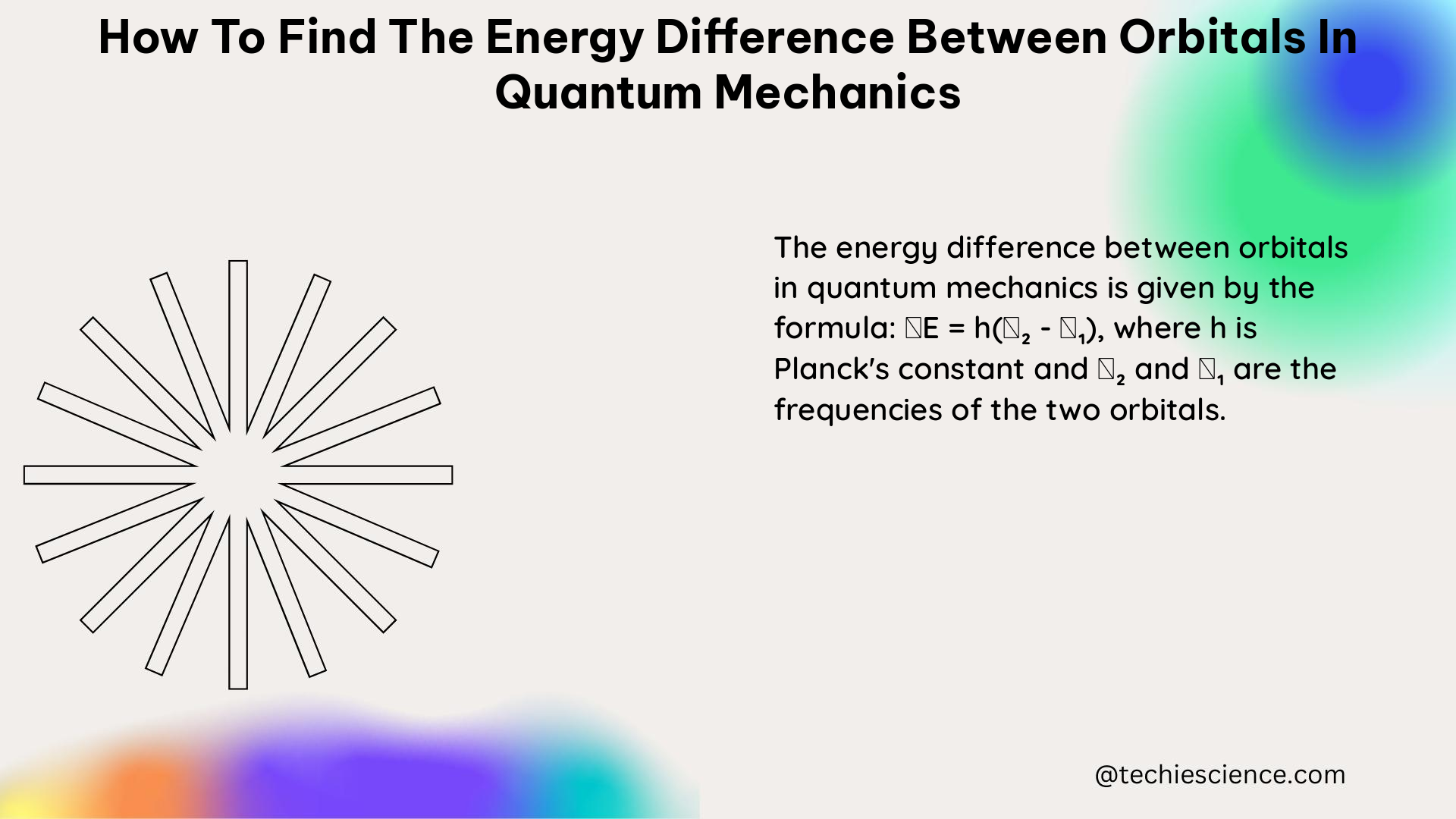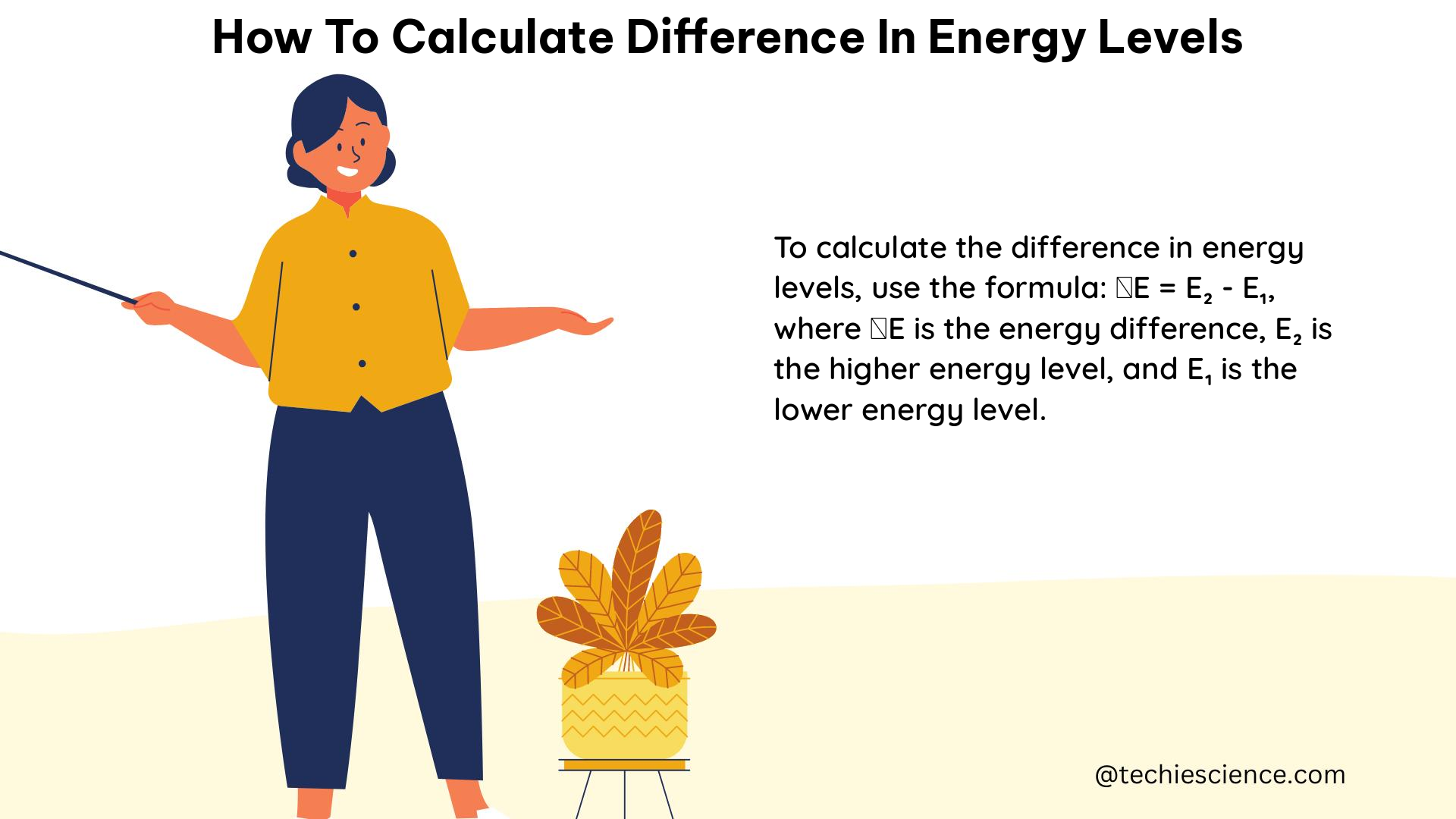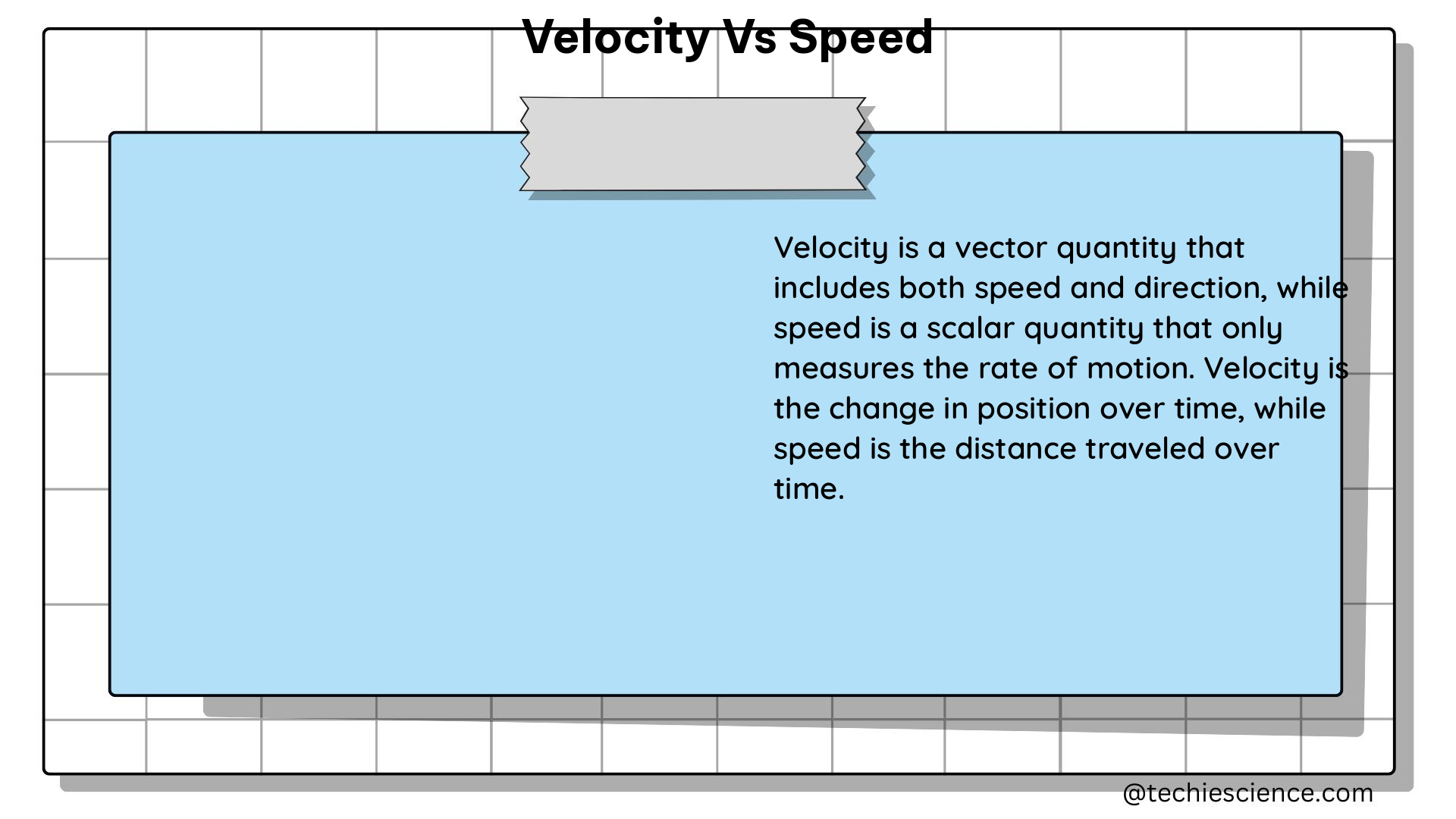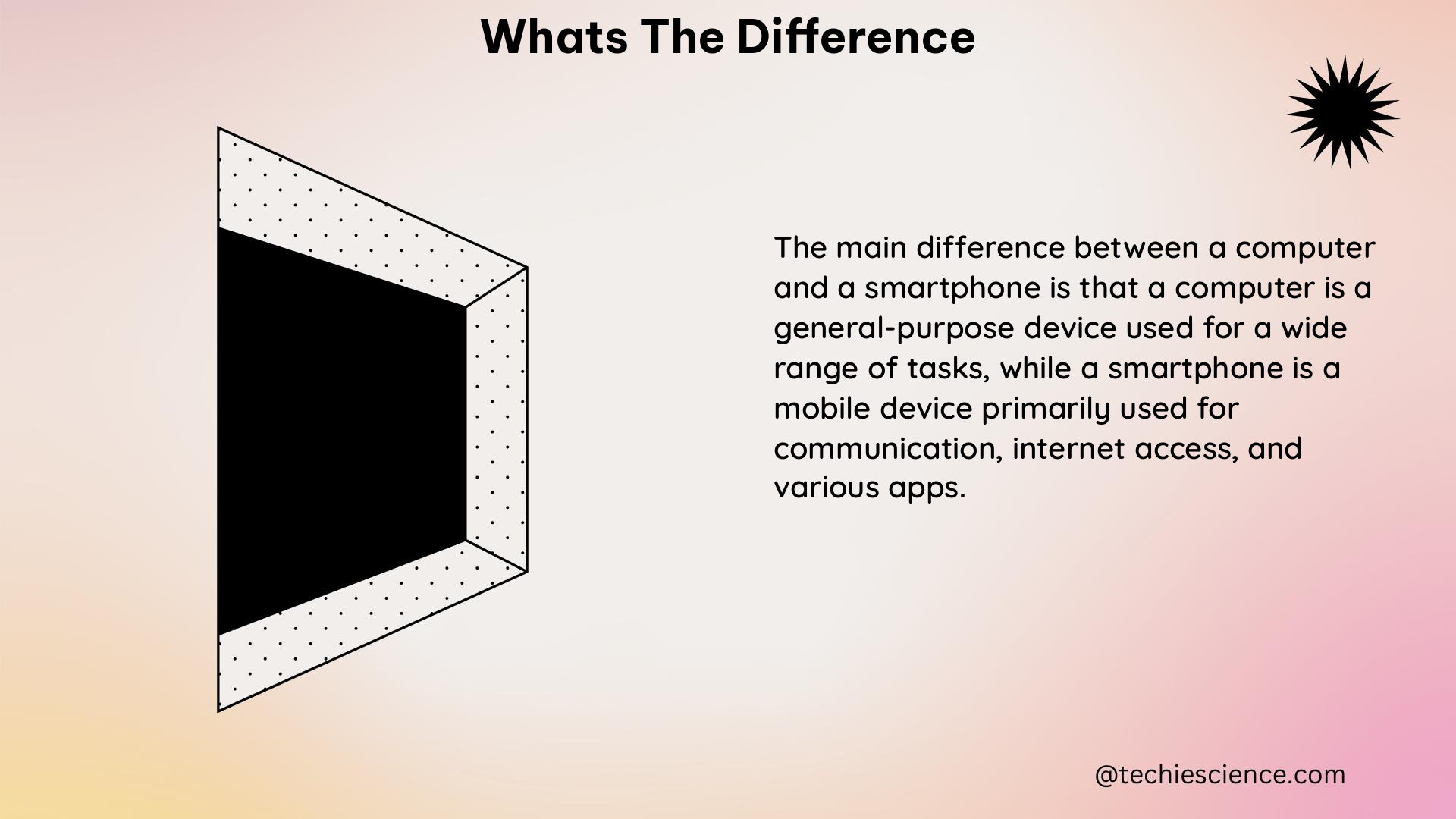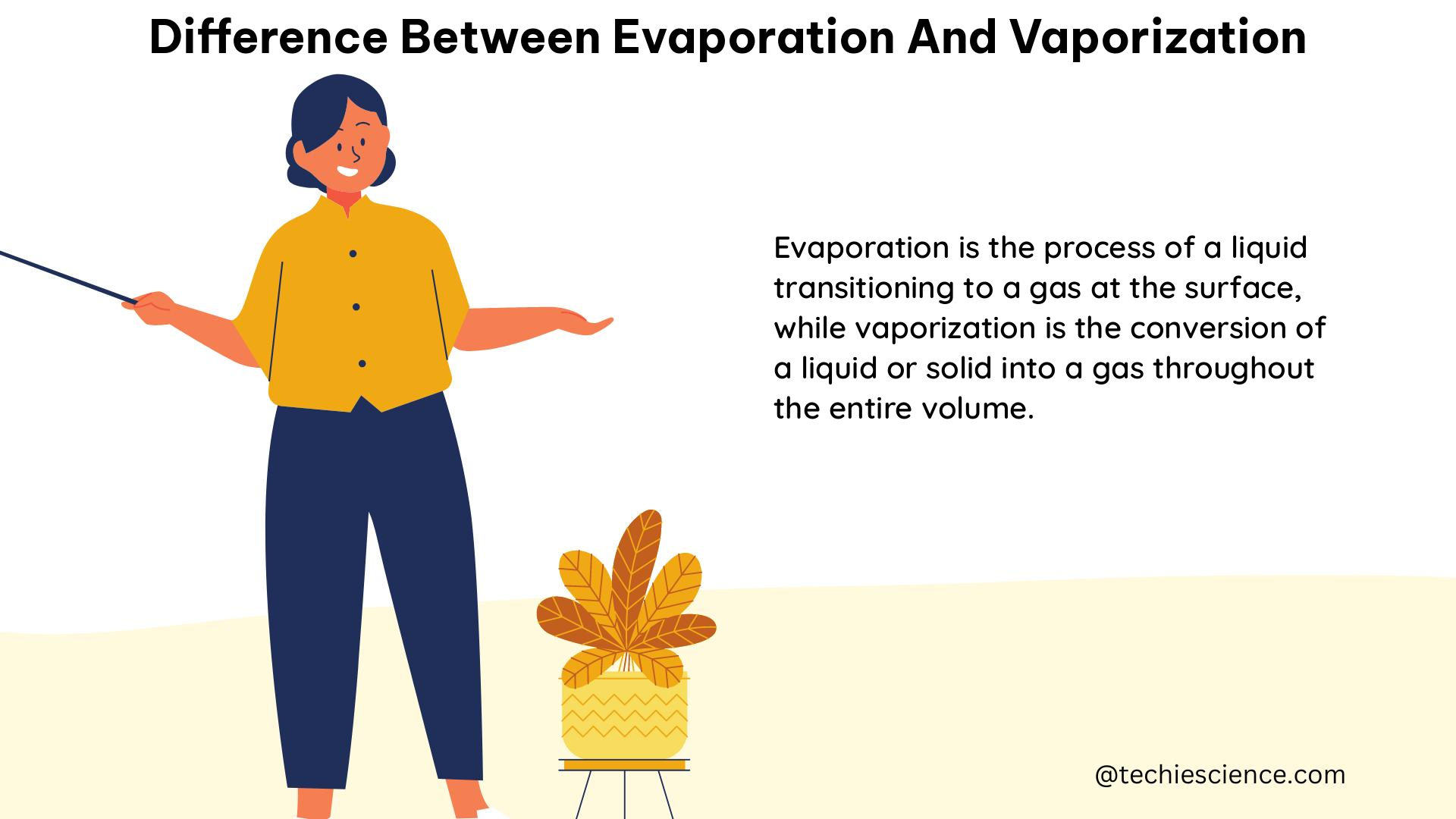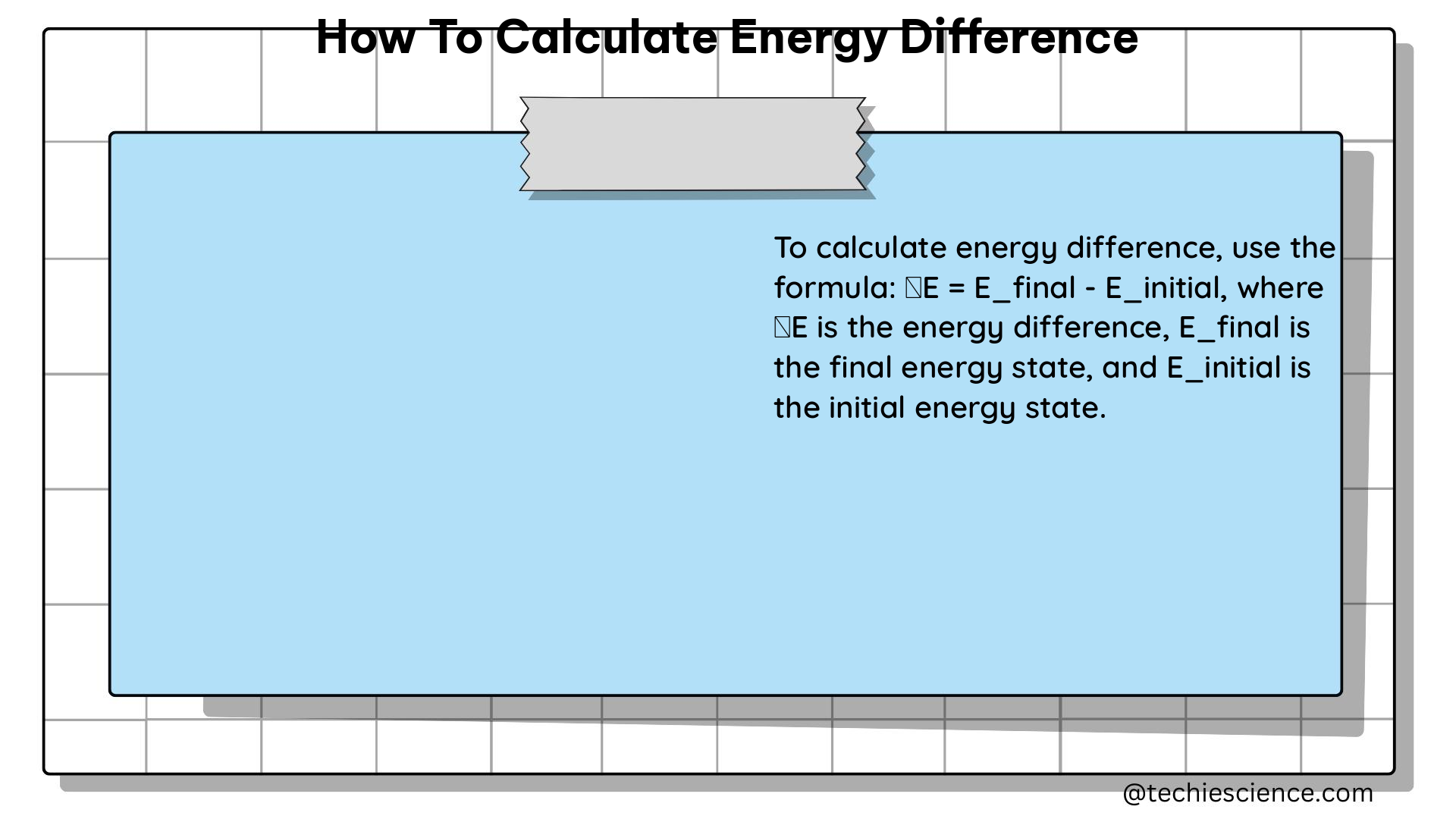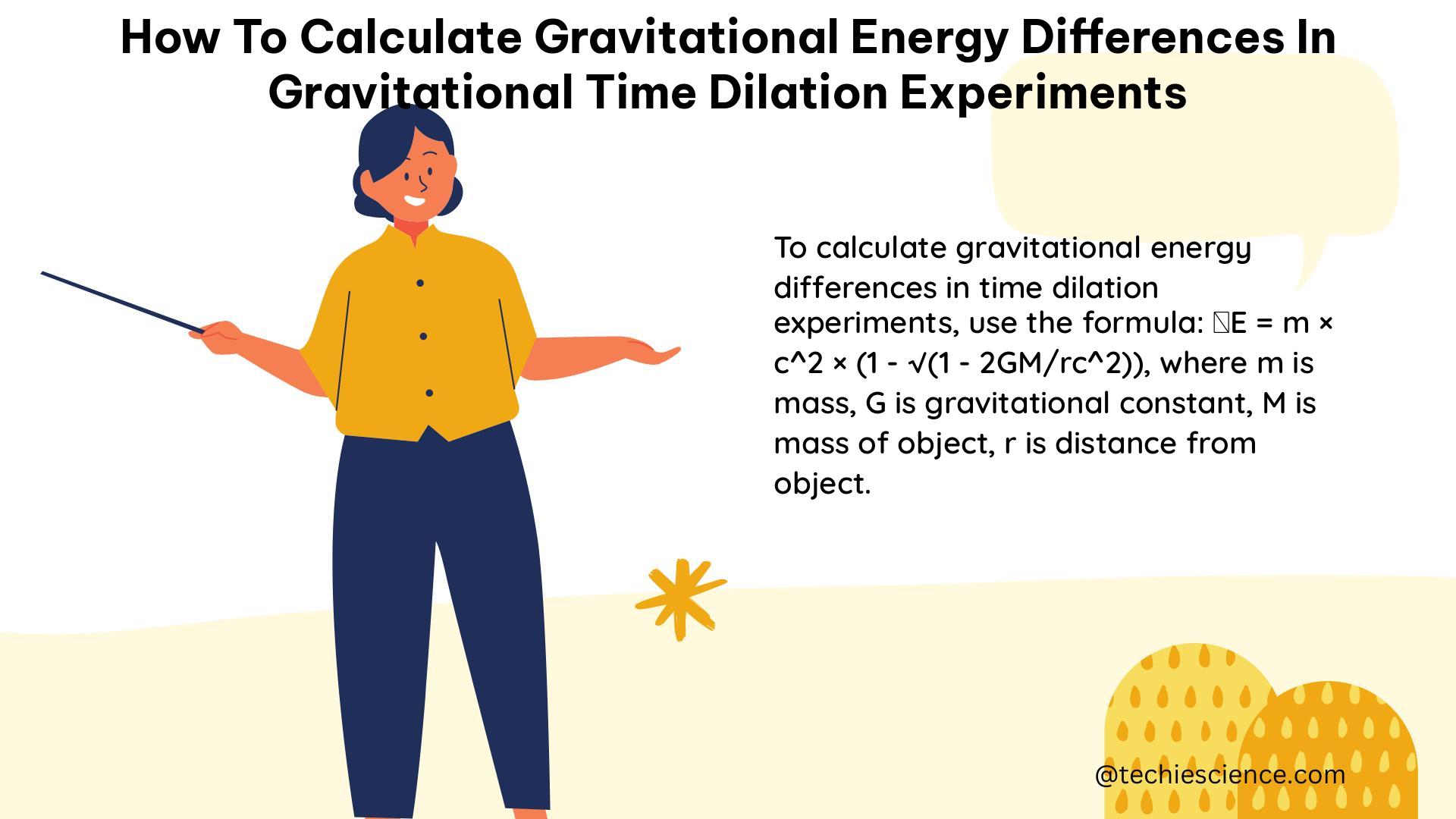Velocity and acceleration are two fundamental concepts in physics that describe the motion of objects. While they are related, there are distinct differences between the two that are crucial for understanding the behavior of moving systems. In this comprehensive guide, we will delve into the five key differences between velocity and acceleration, providing a detailed and technical exploration of each aspect.
1. Definition and Quantifiable Data
Definition:
– Velocity: Velocity is the rate of change of displacement with respect to time. It describes the speed and direction of an object’s motion.
– Acceleration: Acceleration is the rate of change of velocity with respect to time. It describes the change in an object’s speed and/or direction over time.
Quantifiable Data:
– Velocity: The formula for velocity is v = Δx/Δt, where v is the velocity, Δx is the change in displacement, and Δt is the change in time.
– Acceleration: The formula for acceleration is a = Δv/Δt, where a is the acceleration, Δv is the change in velocity, and Δt is the change in time.
2. Nature and Quantifiable Data
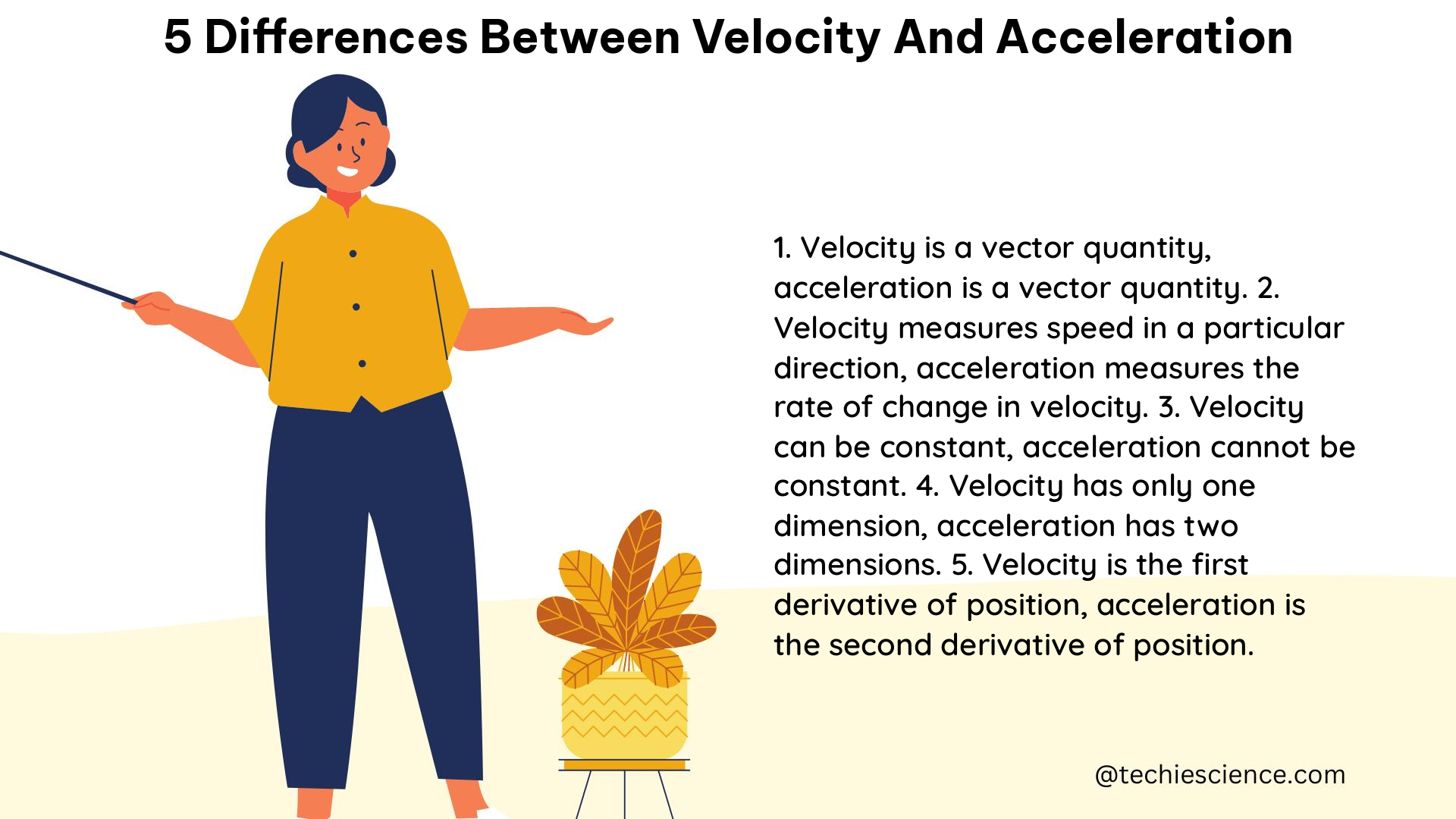
Nature:
– Both velocity and acceleration are vector quantities, meaning they have both magnitude and direction.
Quantifiable Data:
– Velocity: The velocity vector can be expressed as v = (vx i + vy j + vz k) m/s, where vx, vy, and vz are the components of velocity in the x, y, and z directions, respectively.
– Acceleration: The acceleration vector can be expressed as a = (ax i + ay j + az k) m/s^2, where ax, ay, and az are the components of acceleration in the x, y, and z directions, respectively.
3. Symbol and Formula
Symbol:
– The symbol for velocity is v, and the symbol for acceleration is a.
Formula:
– Velocity Formula: v = Δx/Δt
– Acceleration Formula: a = Δv/Δt
4. Quantifiable Data for Velocity and Acceleration Formulas
Velocity Formula:
– v = (final position - initial position) / time
Acceleration Formula:
– a = (final velocity - initial velocity) / time
5. SI Units and Quantifiable Data
SI Units:
– The SI unit for velocity is meters per second (m/s).
– The SI unit for acceleration is meters per second squared (m/s^2).
Quantifiable Data:
– Velocity: m/s
– Acceleration: m/s^2
Additional Differences and Insights
In addition to the five key differences outlined above, there are several other important distinctions between velocity and acceleration:
- Sign and Magnitude: Velocity can be positive, negative, or zero, while acceleration can never be zero (unless the object is not moving at all).
- Graphical Representation: Velocity is determined by the slope of the displacement-time graph, while acceleration is determined by the slope of the velocity-time graph.
- Displacement and Velocity Change: The area under the velocity-time curve signifies displacement, while the area under the acceleration-time graph identifies the change in velocity.
Conclusion
By understanding the five key differences between velocity and acceleration, as well as the additional insights provided, physics students can develop a deeper understanding of the fundamental concepts of motion and their practical applications. This comprehensive guide serves as a valuable resource for students to reference and apply in their studies and problem-solving exercises.
